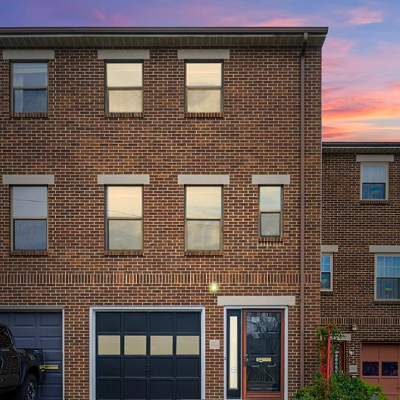Pittsburgh was a significant depot for the Railroad, which helped an estimated 100,000 slaves escape the Old South during the early 1800s. It just may not be quite as significant as we'd like to think.
"The road was 'kept bright' here by constant passage," notes the WPA History of the Negro in Pittsburgh, a Depression-era account.
Geography was one reason. "Three rivers made access and egress easy," the History notes. (And one of those rivers, the Monongahela, even flows north.) "Abandoned coalpits and caves in the hillsides offered safe hiding."
It's also no accident that the anti-slavery Republican Party got its start here. Many local businessmen opposed slavery -- at least partly because they feared competition for their own factories. Others, one suspects, enjoyed the chance to engage in a little skullduggery. Take this account from a local businessman, quoted in the History, who rode in a carriage to conceal the escaping slave hiding inside:
"The curtains of the [carriage] were all rolled up, and no person but the driver could be seen. It was made with a double bottom, and the slave was lying flat between the upper and lower bottoms. The driver kept going very leisurely. ... He was one of our wealthiest citizens and was wearing a fine pair of false whiskers."
But much of the work was done by blacks themselves. In the early 1800s, a portion of the Hill District known as Arthursville housed a sizable black middle class, whose churches and other institutions offered a vital terminal along the Railroad.
The North Side-- which was then known as Allegheny -- was a significant stop too. Another WPA history, Story of Old Allegheny City, cites at least two likely stations there: Avery College, a mid-19th century vocational school founded by Charles Avery and one of the few such schools open to blacks. Another was the mansion of Felix Brunot, where "[r]emains of the old tunnels and entrances [could] still be seen" a century later.
Most of these locations have been destroyed: Of the 64 existing Underground Railroad sites listed by the National Park Service, only one is in the region: the LeMoyne House, in Washington, Pa. Documents filed with the park service include anecdotes of slaves hiding in a dumbwaiter, or beneath the bed of Madeline LeMoyne, who "feigned illness to prevent slave catchers from searching the room."
But a handful of other locations can plausibly claim to have been stations, too. Brentwood's Point View Hotel is perhaps the most famous. Located along Brownsville Road, the Inn sports a trap door in the basement that leads to a sub-basement; escaping slaves were said to have hidden there until they could continue the trek north. A survey of important local sites in black history, A Legacy in Bricks and Mortar, calls the Point View "[o]ne of the few pre-Civil War sites associated with African-American history in this region." (It then notes -- somewhat archly -- that the hotel stands "proudly in the midst of a predominantly white community.")
Up on Mount Washington is another likely site: the Chatham Village home of Thomas Bigham. Despite having served in the state Legislature, Bigham was known as the "Sage of Mount Washington," and reputedly helped escaping slaves, thanks partly to an African-American family nurse who kept a lookout for runaways.
I've heard of other suspected railroad stops; it's natural to hope that any 150-year-old building with a basement might qualify. But so much Underground Railroad history has been, well, buried, that it's hard to be sure.
Take the South Side's Morning Glory Inn. The building has a 15-foot-long tunnel connecting the basement to a chamber beneath Sarah Street. That has led to speculation that slaves might have hidden there, ducking out from carriages through a hole in the street.
"We think it could have been intended as a safe house," says Dave Eshelman, who co-owns the Inn with his wife. But by the time the building was finished, in 1862, the Civil War had already begun, making such covert activities moot.
Still, Eshelman notes, "The brick in the tunnel is well worn, and it dips in the middle." Eshelman's conclusion: "It may not have been used by the Underground Railroad -- but it was most surely used during Prohibition."
But that's a different kind of underground history entirely.










